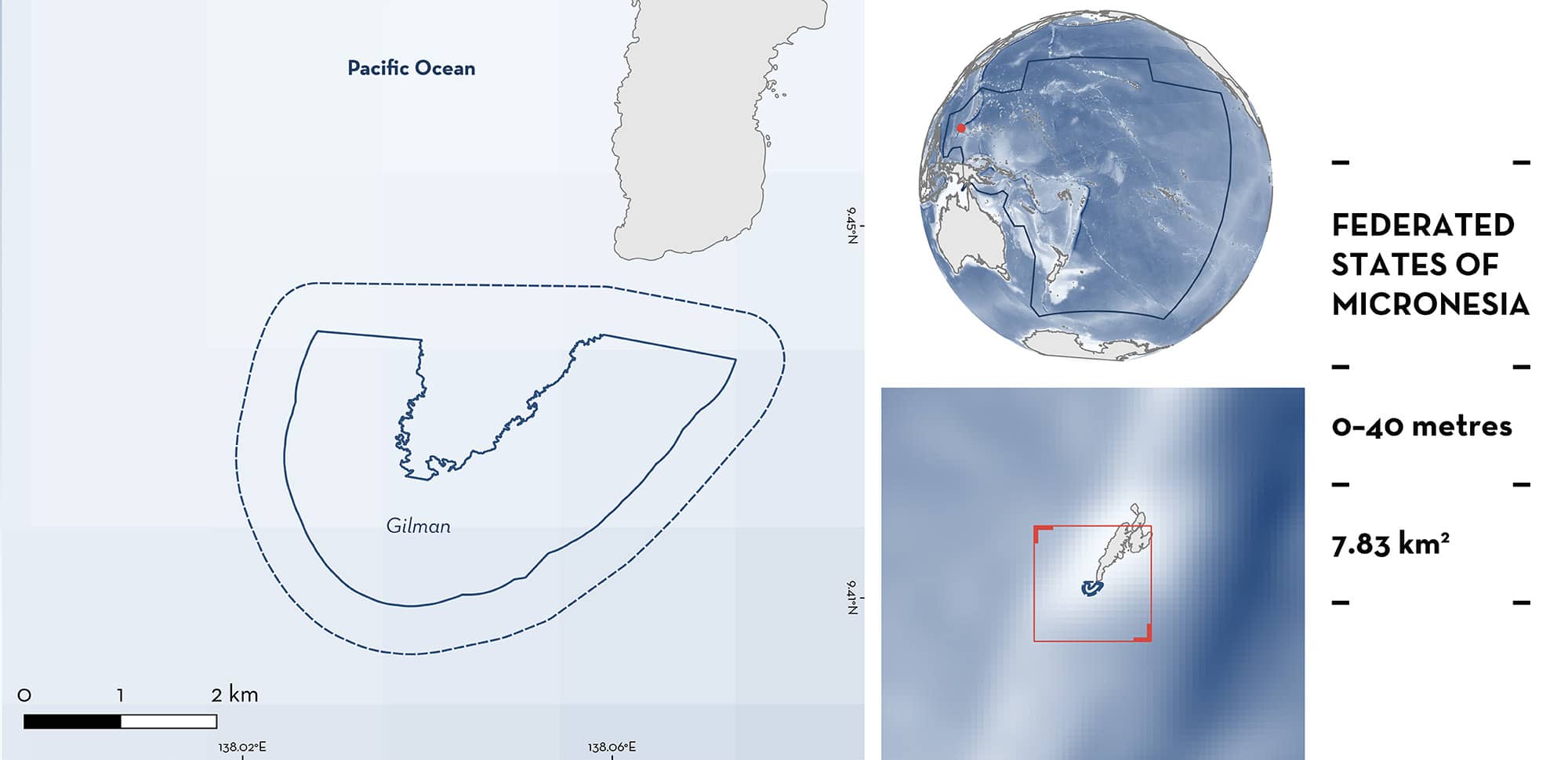ISRA FACTSHEETS
ISRA FACTSHEETS
NEW ZEALAND & PACIFIC ISLANDS REGION
Gilman
Summary
Gilman is located on the southern tip of the island of Yap in the Federated States of Micronesia. The area is characterised by large coral heads surrounded by sandy substrates, particularly in shallow areas. Gilman experiences currents that flow along both sides of the outer reefs, converging to form an eddy in the area off the tip of the island. Within this area there are: threatened species and undefined aggregations (Mangrove Whipray Urogymnus granulatus).
Download factsheet
Gilman
DESCRIPTION OF HABITAT
Gilman is located on the southern tip of the island of Yap in the Federated States of Micronesia. A large reef flat extends beyond the coast in the area. The area is characterised by large coral heads surrounded by sandy substrates, particularly in shallow areas. The area encompasses four local dive sites: ‘Eagle’s Nest’, ‘Lionfish Wall’, ‘Yap Caverns’, and ‘Gilmaan Wall’ (Manta Ray Bay Resort 2024). The trade wind season in the Federated States of Micronesia extends from December–April, while the rainy and typhoon season spans from May–November (J Hartup pers. obs. 2024). The area experiences currents that flow along both sides of the outer reefs, converging to form an eddy in the area off the tip of the island.
This Important Shark and Ray Area is benthic and pelagic and is delineated from inshore and surface waters (0 m) to 40 m based on the bathymetry of the area.
CRITERION A
VULNERABILITY
One Qualifying Species considered threatened with extinction according to the IUCN Red List of Threatened Species regularly occur in the area. This is the Endangered Mangrove Whipray (Sherman et al. 2024).
CRITERION C
SUB-CRITERION C5 – UNDEFINED AGGREGATIONS
Gilman is an important area for undefined aggregations of one ray species.
Between 2014–2024, recreational dive surveys were conducted in the area (~20 per year between 2014–2019, ~35-40 per year between 2019–2024; J Hartup pers. obs. 2024). Mangrove Whiprays were observed during 75% of dives (range = 1-3 individuals, average = 2). Observations were year-round, however survey effort was highest between May–September. Mangrove Whiprays were always seen resting on the sandy substrate, and this is the only location around Yap where this species is observed. More information is needed to confirm the nature and function of this aggregation.
Download factsheet
SUBMIT A REQUEST
ISRA SPATIAL LAYER REQUEST
To make a request to download the ISRA Layer in either a GIS compatible Shapefile (.shp) or Google Earth compatible Keyhole Markup Language Zipped file (.kmz) please complete the following form. We will review your request and send the download details to you. We will endeavor to send you the requested files as soon as we can. However, please note that this is not an automated process, and before requests are responded to, they undergo internal review and authorization. As such, requests normally take 5–10 working days to process.
Should you have questions about the data or process, please do not hesitate to contact us.


